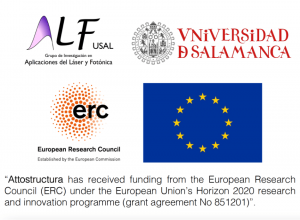The University of Salamanca (Spain) invites application for a 3-year PhD Student position to obtain a PhD degree in Physics, starting in September 2022. The position is part of the project ATTOSTRUCTURA, “Structured attosecond pulses for ultrafast nanoscience”, funded by the European Research Council (ERC) under the European Union’s Horizon 2020 research and innovation program (grant agreement No. 851201), supervised by Dr. Carlos Hernández-García, and with a duration of 5 years.
Application deadline: May 2nd 2022
The PhD candidate will enroll the project “Structured attosecond pulses for ultrafast nanoscience” at the Laser Applications and Photonics Research group (ALF-USAL) at University of Salamanca (https://laser.usal.es/alf/en/home/). The candidate will find a dynamic and international working environment, and will enrol in the theoretical group. ALF-USAL is an interdisciplinary Optics research group with expertise in both theory (strong-field physics, nonlinear optics, ultrafast phenomena, attosecond science) and experiments (ultrashort pulse characterization, pulse shaping, photonic crystals, ultrashort micro-machining). The candidate will explore the generation and ultrashort structured pulses and their application in ultrafast magnetism, an emerging field that is opening exciting scenarios in laser-matter interaction at the most fundamental level, merging the fields of Optics and Magnetism.
Some of the recent results have been published in high impact factor scientific journals:
-“Generation of extreme-ultraviolet beams with time-varying orbital angular momentum”, L. Rego, K. M. Dorney, N. J. Brooks, Q. Nguyen, C-T. Liao, J. San Román, D. E. Couch, Allison Liu, E. Pisanty, M. Lewenstein, L. Plaja, H. C. Kapteyn, M. M. Murnane, C. Hernández-García, Science 364, eaaw9486 (2019). Highlighted in the media:
- Physicists discover croissant-shaped twists of light. National Geographic (USA)
- Twisted light gains angular momentum through ‘self-torque’. PhysicsWorld (UK)
- Descubierta una nueva propiedad de la luz. El País (Spain)
- Físicos españoles descubren una nueva propiedad de la luz. El Mundo (Spain)
-“Controlling the polarization and vortex charge of attosecond high-harmonic beams via simultaneous spin-orbit momentum conservation”, K. M. Dorney, L. Rego, N. Brooks, J. San Román, C-T. Liao, J. L. Ellis, D. Zusin, C. Gentry, Q. Nguyen, J. M. Shaw, A. Picón, L. Plaja, H. C. Kapteyn, M. M. Murnane, C. Hernández-García, Nature Photonics 13, 123–130 (2019).
-“Extreme-Ultraviolet Vector-Vortex Beams from High Harmonic Generation“, Alba de las Heras, Alok P. Pandey, Julio San Román, Javier Serrano, Elsa Baynard, Guillaume Dovillaire, Moana Pittman, Charles Durfee, Luis Plaja, Sophie Kazamias, Olivier Guilbaud, Carlos Hernández-García, Optica 9, 71-79 (2022).
-“Necklace-structured high harmonic generation for low-divergence, soft X-ray harmonic combs with tunable line spacing”, Laura Rego, Nathan J. Brooks, Quynh L. D. Nguyen, Julio San Román, Iona Binnie, Luis Plaja, Henry C. Kapteyn, Margaret M. Murnane, Carlos Hernández-García, Science Advances 8, eabj7380 (2022).
The candidate will explore the application of Artificial Intelligence to the Physics behind the generation of ultrashort structured pulses, an emerging field that is opening exciting scenarios in laser-matter interaction at the most fundamental level, merging the fields of Optics and Computing Sciences. The candidate will be advised thus by two experts in each of those fields:
- Dr. Javier Serrano (expert in high performance computing, artificial intelligence)
- Dr. Carlos Hernández-García (expert in ultrashort structured laser pulses and nonlinear optics)
- Development and implementation of theoretical methods to describe the interaction of femtosecond and attosecond structured laser pulses with atomic and solid systems.
- Usage of Artificial Intelligence libraries like Keras / Tensorflow for the design, training and application of neural networks to the generation of ultrashort structured pulses.
- Development and improvement of software using C/C++ or Fortran to simulate high harmonic generation, taking advantage of HPC resources and technologies like OpenMP, MPI and CUDA.
- Application of the developed codes to explore the limits of sub-attosecond pulse generation, with possibilities to interact with experimental collaborators.
- University degree in Physics or Computing Sciences.
- Master program, Physics-related or Computing Sciences-related.
- Programming skills in Python, C/C++ and/or Fortran.
- Advanced level of English: higher than B2 according to the Common European Framework of Reference for Languages or equivalent.
- Candidates should be able to demonstrate a promising track record of achievements appropriate to their career stage.
- Type of contract:
- PhD contract.
- Limited to 3,5 years, until the end of the project. Contract to be renewed annually.
- Full-time employee (37,5 hours a week)
- Economic compensation:
- Gross salary of:
- 1.300 €/month (14 salaries), during the first and second years.
- 1.384 €/month (14 salaries), during the third year.
- Research Project:
- ATTOSTRUCTURA, “Structured attosecond pulses for ultrafast nanoscience”, funded by the European Research Council (ERC)
- Workplace:
- Laser Applications and Photonics Research group (ALF-USAL) at University of Salamanca (https://laser.usal.es/alf/en/home/), Spain.
- Estimated starting date: September 2022.
- Gross salary of:
Interested candidates should send a CV (maximum 3 pages), a complete list of grades during his/herdegree and Master program, a personal statement with interests and reasons for applying, and two recommendation letters to Dr. Carlos Hernández-García at alf@usal.es.
For further information and inquiries see Euraxess web page, or contact Dr. Carlos Hernández-García at alf@usal.es.
SELECTION PROCESS
The selection process is governed by the principles of publicity, equality, merit, and ability, constituting the effect one selecting body composed of representatives of the group of research of USAL.
The selection process will consist of two phases:
- Analysis phase and curricular value of all nominations received, classified on the basis of better adaptation of the Curriculum vitae to the profile established and compliance with the requirements.
- Personal interview: the three candidates with the highest scores in the Phase 1 will be selected for a personal interview.
SELECTION COMMISSION
The selection commission will be made up of the two co-advisors, Dr. Javier Serrano and Dr. Carlos Hernández-García, and one member of the research team Laser Applications and Photonics Research group (ALF-USAL) at Universidad de Salamanca.
More information about the project, the position and the application process can be found Euraxess web page.



Leave a Reply